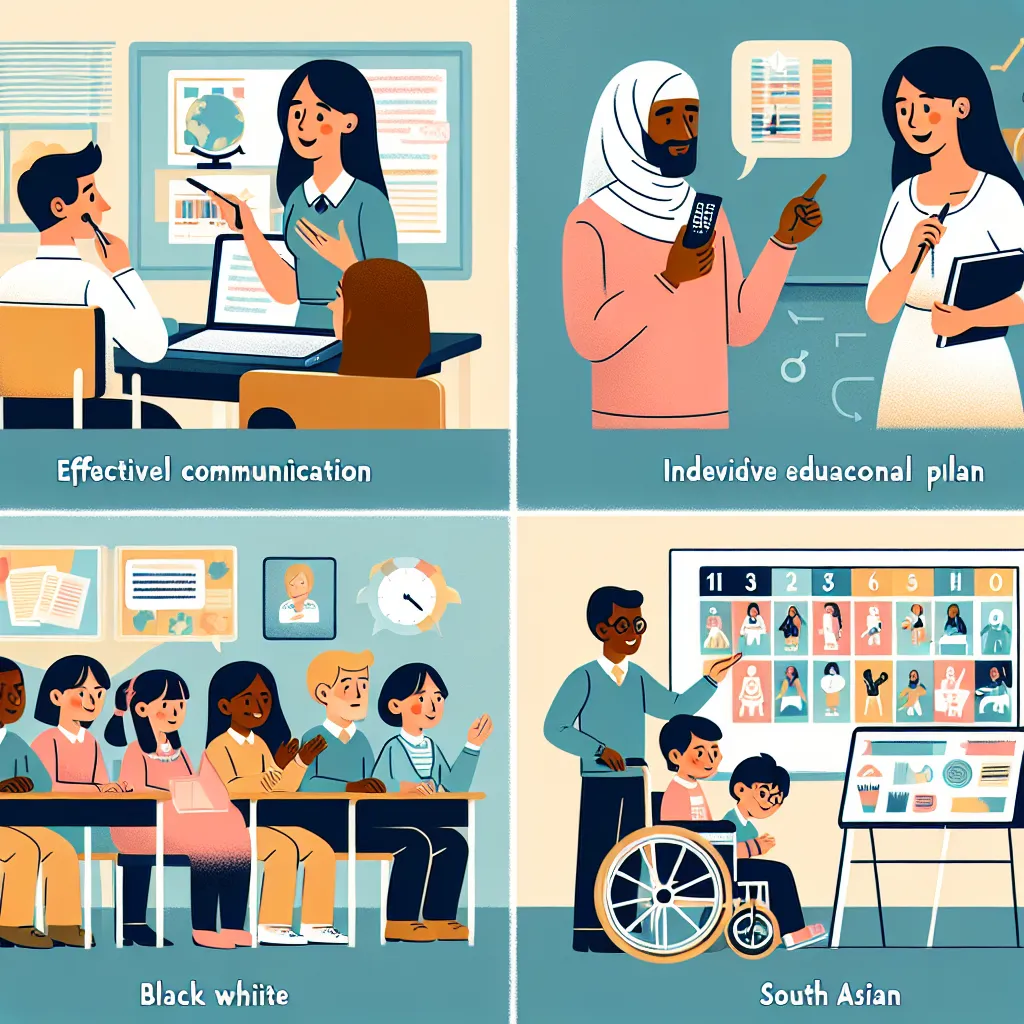Ask AI on The Internet
Question: UNESCO (2001) highlights a nine-point plan for a teacher to deal with diversity in the learning environment. We will touch on many of these aspects in the following pages: - effective communication - classroom management - having individual educational plans - use of assistive devices - preparation of lessons - individual help for learners - management of learner behaviour - fostering social inclusion of all learners in the school. Question 1 read the abstract above and answer the following question One of the responsibilities of the teacher as an agent of inclusivity is to be able to identify and address diversity in the classroom. Hence UNESCO (2001) highlights a nine-point plan for a teacher to deal with diversity in the learning environment. In relation to the above statement name and briefly explain by giving classroom related examples any 4 of the suggested nine-point plan (You will get one mark for naming and two marks for explaining using classroom related examples). ` (4X3=12)
1. **Effective Communication** **Explanation:** Effective communication involves clear and concise exchange of information, ensuring understanding among all learners. As a teacher, you need to use language that is accessible to all students, taking into account their language proficiency and abilities. **Classroom Example:** In a multilingual classroom, a teacher uses visual aids, gestures, and simple language to ensure non-native speakers comprehend instructions. Additionally, the teacher encourages peer support, where students help each other understand the material. 2. **Classroom Management** **Explanation:** Classroom management entails maintaining an orderly environment that fosters learning and minimizes disruptions. This includes setting clear expectations, consistent routines, and effective disciplinary strategies. **Classroom Example:** A teacher uses a seating arrangement that encourages collaboration and minimizes distractions. They implement a system of hand signals to manage interruptions and a reward chart for positive behavior reinforcement, ensuring all students, including those with behavioral challenges, can learn effectively. 3. **Individual Educational Plans (IEPs)** **Explanation:** IEPs are tailored educational roadmaps designed to meet the unique needs of individual students, particularly those with special educational requirements. These plans outline specific goals and strategies to cater to each student’s strengths and weaknesses. **Classroom Example:** A student with dyslexia receives an IEP that includes specific reading interventions, extended time for assignments, and the use of audiobooks. The teacher collaborates with special education staff to monitor the student’s progress and adjust the plan as needed. 4. **Preparation of Lessons** **Explanation:** This involves designing lessons that accommodate various learning styles and needs, ensuring that all students can access and engage with the content. This includes differentiated instruction and multimodal teaching approaches. **Classroom Example:** While planning a science unit, the teacher creates a variety of activities that cater to different learning styles: visual (diagrams and videos), auditory (discussions and podcasts), and kinesthetic (hands-on experiments). This ensures all students, regardless of their preferred learning style, can engage with and understand the content. By implementing these strategies, a teacher can create an inclusive classroom environment where all students have the opportunity to succeed.
Think your answer is better than the AI's? Post it below.
Other Most Relevant Posts:
 1. Inclusive Education
2. Transformative Teacher
3. Special School
4. Barriers to Learning
5. Social Isolation
Recognizing Individual Needs
Building a Supportive Classroom Culture
Providing Diff
1. Inclusive Education
2. Transformative Teacher
3. Special School
4. Barriers to Learning
5. Social Isolation
Recognizing Individual Needs
Building a Supportive Classroom Culture
Providing Diff
 Inclusive Teaching Approaches for Multicultural English Language Students: Strategies for Culturally Diverse Classrooms
Inclusive Teaching Approaches for Multicultural English Language Students: Strategies for Culturally Diverse Classrooms
Question Tags
If you want your question answered by an AI, click here.





Post your own comment: